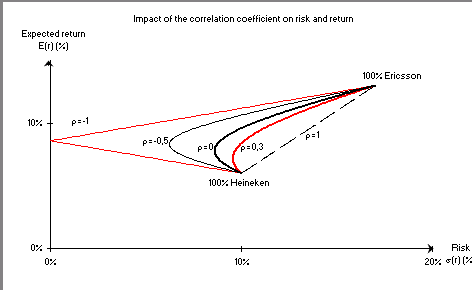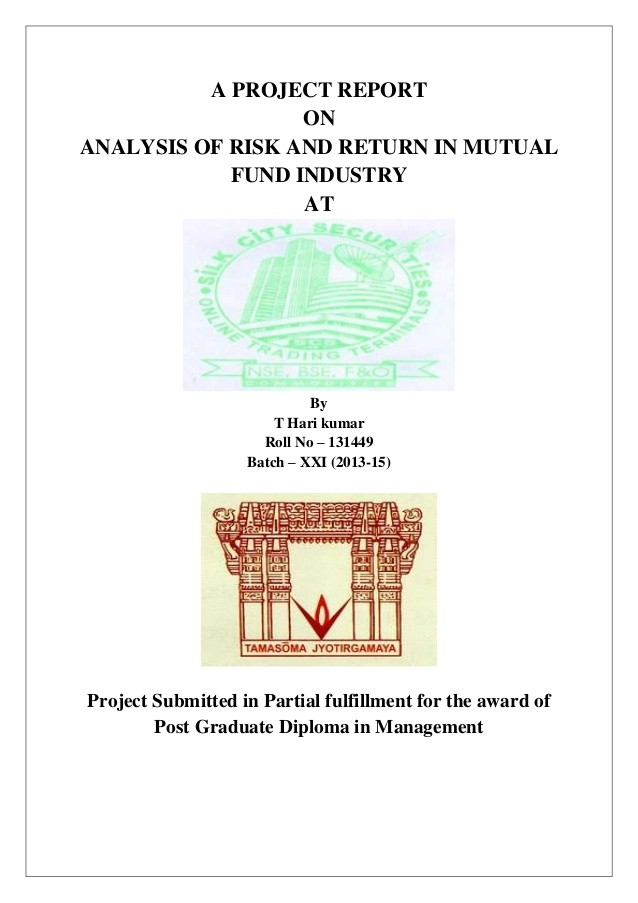On Risk and Return
Post on: 15 Апрель, 2015 No Comment

Adapted from Weighing Risk against Return Can be a Risky Business by Karen Slater, The Wall Street Journal, August 1989
Most investors know they are supposed to be weighing risk against return in making investment decisions. But how does one put a number on the riskiness of a particular investment or portfolio?
Financial professionals use several measures that can be valuable for individuals in planning their portfolios. In particular, quantifying risk is a big part of asset allocation, a service whose popularity has grown since the 1987 stock market crash.
Unfortunately, like many aspects of managing one’s money, gauging investment risk is both more complex and less certain than most people would like.
Some people think that when you have a model, because it’s scientific, you get the exact right answer. But this is still a judgment game, says IT 1
Consider, for instance, the varied portfolios recommended by a sampling of financial advisors and asset allocation specialists, including IT. They were asked to design a portfolio that would take the least risk while having an expected return of 10% a year.
All four specialists put a minority of the funds in common stocks — traditionally seen as one of the riskier investments — and emphasized a mix of cash equivalents and bonds. But the variations were considerable: The recommended commitments to bonds, for example, ranged from 2% to 50% of the portfolios; the range for stocks was zero to 36%.
So what is this thing called risk that financial professionals can gauge so differently?
Risk has traditionally been equated with the volatility of investment returns. Small company stocks are deemed riskier than large company stocks, for instance, because the best years for small stocks have been more stupendous and the worst years more sickening.
Along those lines, financial advisors often measure the standard deviation, or variance, of an investment’s short-term returns from its own average return over a longer period. Standard deviations are calculated for entire portfolios to size up the best and worst performances they are likely to turn in.
Similarly, investors may see references to beta, a calculation of the volatility of a particular stock or mutual fund relative to a broad market indicator such as the Standard & Poor’s 500 stock index.
The lower the beta or standard deviation, the lower the risk.
Many financial advisers aim to construct portfolios that are unlikely to do worse in any single year than individual investors determine they can stomach financially and emotionally.
It comes down in many cases to a gut level decision, says SBE 2. Ninety-five percent of the clients want no more than a 10% loss.
Calculation of future risk, however, is the subject of much debate. For instance, is it appropriate to use the high volatility of bond returns over the past several decades, or someone’s best guess?
A minority of advisers declares that the whole approach is flawed. Their alternative is to draw up various economic scenarios for the coming year and to estimate the how different investments would fare in each case.
We want to understand how much risk we are taking now, not how much risk one would be asking on average over along period of time, explains HRL 3.
But some see peril in the scenario approach. That is just fine in principle, says WFS 4. But there is a tendency for people, when they write down a limited number of scenarios, to not put down really extreme scenarios or attach a high enough probability to the extremes.
Practitioners may also disagree about how a particular type of investment will perform in a particular environment over the coming year. M.D.Sass 5 currently estimates that stocks would post a one-year loss of 18% in a recession. Bailard Biehl 6 puts the investment loss at only 5%.
Advisers say some risks aren’t adequately addressed by the standard mathematical measures. Where real estate investments are concerned, for example, there is the risk of having to wait months to find a buyer.
And analyses based on the expected returns and price fluctuations for different investment categories, such as stocks or corporate bonds, don’t fully address the risks associated with individual issues within those groups. For example, it may make perfectly good sense for an investor to be in the bond market, but being in certain issues may be very risky because of the chance of default.
But investors really need to evaluate risk with two time frames in mind, says HRL: There’s the return they need over the long-term and how much pain they can tolerate between now and then.

JM 7 says: Some people, in trying to avoid risk, put all their money in Treasury bills. But the likelihood of their achieving their wealth goals may be virtually zero.
Advisers can address that longer-term risk by estimating the portfolio return an investor needs to build enough cash to meet long term goals. Then, usually using standard deviations, they can also calculate probabilities that a particular portfolio will deliver that target return or, say, beat inflation over an extended period.
Indeed, that focus on long term goals should be the starting point for evaluating risk, says RG 8. Starting from short-term volatility, he says, is a ‘trees’ kind of answer rather than a ‘forest’ kind of answer. I think you want to look at the forest first.
1. Irwin Tepper, president of asset-allocation firm in Newton MA
2. Steven B. Enright, financial planner, Seidman Financial Services, NY
3. Hugh R. Lamle, Exec VP of M.D. Sass Investors Services, NY
4. William F. Sharpe, Nobel Laureate at Stamford University
5. See Note 3 above
6. Bailard, Biehl & Kaiser, investment advisers, San Mateo, CA
7. John Markese, director of research for American Association of Individual Investors in Chicago
8. Richard Grinold, director of research at BARRA, a Berkeley, CA














